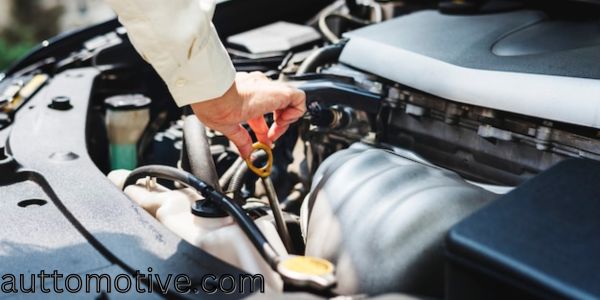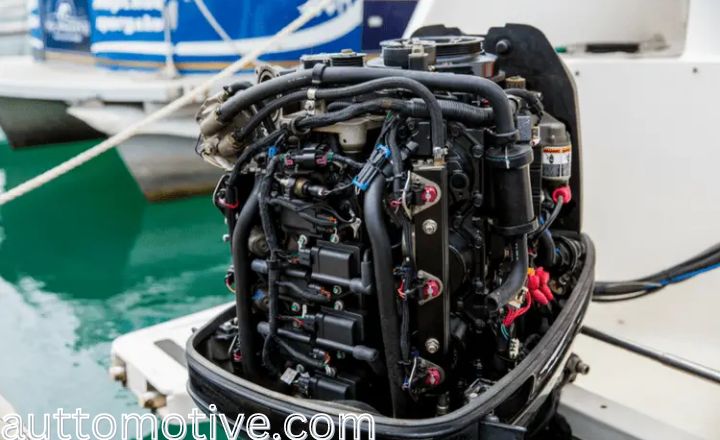Boats and cars share many common parts, such as engines. Car and boat engines are very similar, so you must equip the boat’s engine with a cooling system. It is not an easy task but done with ingenuity and patience. If you want to put a car engine in a boat, you must find the right one.
The ship should be stable and have a low center of gravity. The machine is from the car and transferred to the boat. You must remove the engine from the ship and install it into the new boat. There are many online resources available that can help guide you through the process of how to put a car engine in a boat.
What Is the Difference Between Marine Motors and Car Motors?

Investing in a new marine engine can be overwhelming for those who own boats. If you plan on doing any work on your boat during the process and converting a car engine into a boat engine, we recommend replacing your old marine engine with a new one. At the same time, it may seem like an added expense, but using an old, unreliable marine engine can lead to more significant problems.
The significant difference between marine engines and car motors is their intended use. Car motors withstand these conditions, and using them in a boat can result in damage or even failure due to corrosion. A significant factor is a cost. When comparing the two, vehicle engines tend to be less expensive than their marine counterparts.
Will an auto diesel fit in my boat?
One of the biggest challenges when marinizing an automotive engine is ensuring that the cooling system can handle the demands of marine use. Unlike cars and trucks, boats don’t have air rushing over their radiators to keep them cool. Instead, they rely on water flowing through a heat exchanger to transfer heat from the engine.
If you want to use an automotive diesel in your boat, you must install a heat exchanger as part of the cooling system. Keep in mind that the seawater side of the heat exchanger will require the installation of a raw water pump. This pump will draw seawater into the cooling system and then push it through the heat exchanger, absorbing the engine’s excess heat before being pumped back into the ocean or lake.
One of the critical requirements for running a diesel engine on water is having a water-cooled exhaust manifold and wet exhaust system. These components work together to cool the exhaust gases before expelling them into the open air. You will need more than an automotive cylinder head with these components. It can add additional costs and complexity to the overall project, but it’s critical for ensuring that your vessel runs smoothly and safely.

A ship does not need an automobile transmission.
- The drive shaft of the transmission must be compatible with the engine’s output shaft to ensure the proper function of the machine. If the post isn’t consistent, it can cause damage to either component and may even fail the entire transmission.
- Gear reduction ratios are essential when selecting an engine for a vehicle. The gear reduction ratio (gear ratio) must be compatible with the engine requirements. If the gear reduction ratio is not consistent, then the engine will not be able to work correctly with the vehicle.
- The output of the transmission must be compatible with that of the motor. To ensure proper function, the transmission output shaft and the motor’s output shaft must match size and shape. The gears in the transmission must fit appropriately into the corresponding backpacks on the engine. If any of these components are not compatible, it can cause damage to both machines.
One such challenge is the need for a suitable instrument panel for the engine. It means creating an appropriate forum to accommodate all necessary gauges and instruments. At the very least, you will require an oil pressure gauge and a temperature gauge – unless you can match them up with existing sending units. We recommend installing an hour meter and a tachometer.
These instruments will provide valuable information about your ship’s health and performance. While some argue that a boat does not need an automobile transmission, it’s important to remember that having proper instrumentation is critical to ensuring safe operation on the water.
Changes to the ignition (starter) circuit may be necessary.
A marine engine is a complex machinery requiring careful maintenance and attention. The critical component of any marine engine is the governor, which helps to maintain the engine speed at an acceptable level regardless of the load on the machine. It is similar to cruise control in a car, ensuring your vessel operates smoothly and efficiently. If you want to change your marine engine’s performance or improve fuel efficiency, you may need to adjust the engine or fuel injection pump.
You are changing various parts of the ignition circuit or fuel system, such as adjusting valves or replacing injectors. Replace other components like spark plugs or air filters to achieve optimal performance. It’s important to note that making changes to your marine engine can be complex for experienced professionals.
In the absence of a governor, an engine’s speed will vary slightly in response to changes in load. While it is not required to have a governor, it can help ensure that a machine runs smoothly and efficiently. It is because governors regulate engine speed by controlling fuel flow or ignition timing. The ignition (starter) circuit changes may be needed if an engine does not have a governor.
This circuit controls the spark that ignites the fuel in the combustion chamber, allowing the engine to start and run smoothly. A machine may experience misfires or stalls under heavy loads without proper ignition timing. While a governor can be beneficial for specific applications, it may only sometimes be necessary or cost-effective. Small engines used for hobbies or light-duty tasks may not require one.
Inboard Boat Engines Are Not Car Engines
If you’re considering repowering your boat, it’s essential to understand the significant differences between marine inboard and automobile engines. While a crate engine from an automobile manufacturer may seem like a great deal or solution at first glance, many factors make these two types of machines vastly different. Marine inboard engines are specifically designed for use on boats and should never be with car engines.
Marine inboard engines require raw water intake through the hull to cool the engine, while automobiles use air flowing through the radiator. Marine engines’ unique cooling requirements mean they have multiple heat exchangers, raw water pumps, and thermostats to ensure proper cooling without causing corrosion or other problems. In a car or any automobile, temperatures stabilize thanks to an internal cooling system that circulates coolant through the engine block.
On the other hand, Marine engines get their cooling water directly from their environment – whether it’s saltwater or freshwater. It means that marine engines need graphic design for this type of use, with materials and components that can withstand exposure to water and other corrosive elements.
When you’re out on the ocean and running your engine, keep it cool with seawater from outside. Suppose the engine reaches a temperature of 180 degrees or higher. In that case, something interesting happens: The seawater begins to desalinate, and you end up with a salt block with all the vapor pockets. It can cause severe damage to your engine and can even result in costly repairs or replacements.
Final words about How to Put a Car Engine in a Boat
It would help if you replaced the entire machine by running your boat with an automobile engine. Automobile engines are not designed for boats and can easily cause fires in the engine room. Instead, use a marine diesel or gasoline engine. This guide provides you with everything you need and a brief guide about how to put a car engine in a Boat. Read the entire manual before beginning, and follow the steps carefully. This project can be a fun and rewarding experience. Car engines typically come with either a small or large propeller, but not both.
Frequently Asked Question
How do I know if my engine is good?
Check the compression levels and make sure it’s at the correct level. Look for any signs of wear or tear on the engine. If any of these things are wrong, your motor may need to replace.
Can I put an engine in a boat if it doesn’t have a mount?
Yes, you can put an engine in a boat if it doesn’t have a mount. One way is to use a bracket system. Another way is to use a strap system.
What are the best tools for putting engines in boats?
One type is a crane. Another tool is a hoist. A hoist can lift the engine and place it in the boat.

